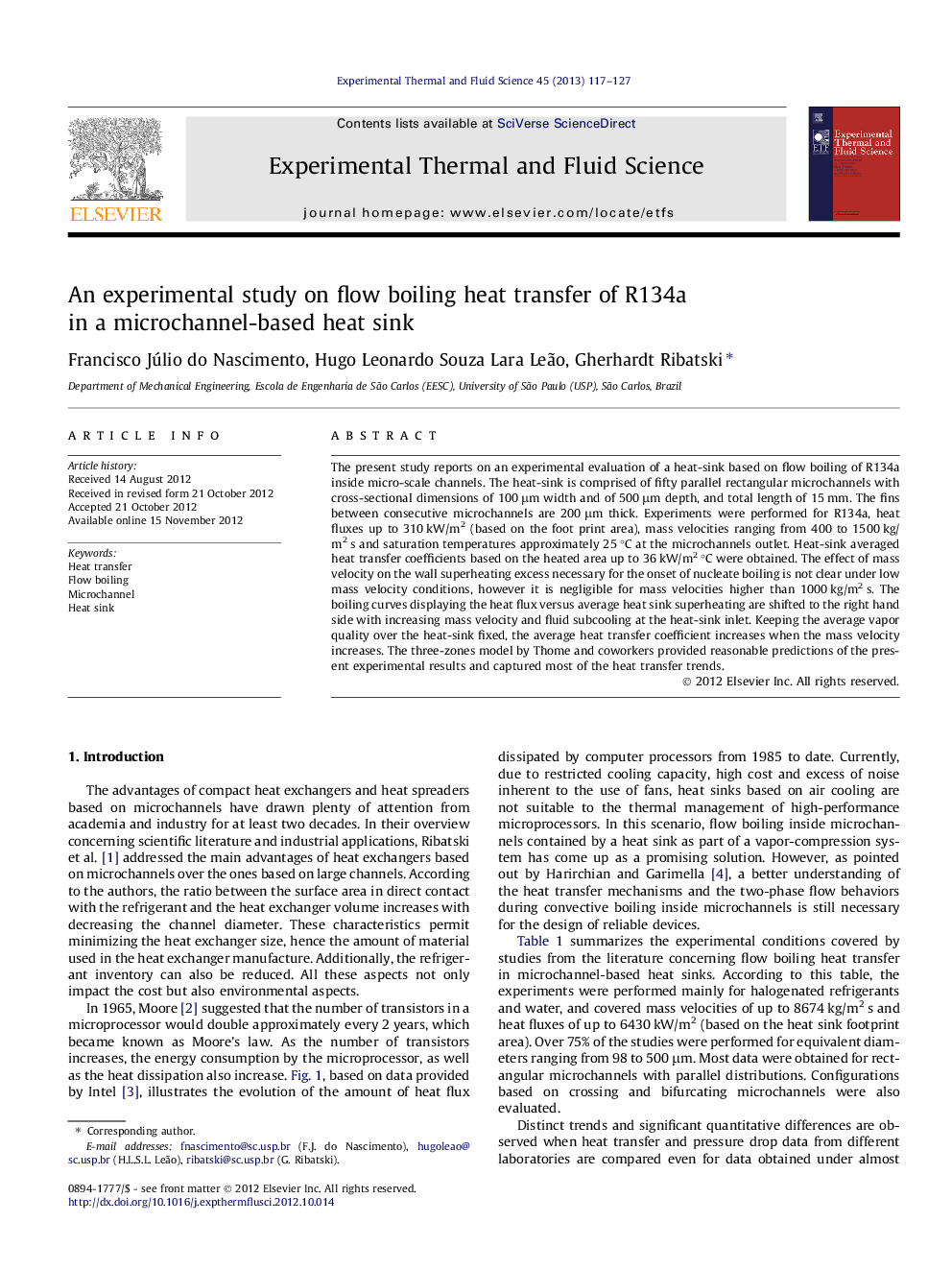| کد مقاله | کد نشریه | سال انتشار | مقاله انگلیسی | نسخه تمام متن |
|---|---|---|---|---|
| 651863 | 1457431 | 2013 | 11 صفحه PDF | دانلود رایگان |

The present study reports on an experimental evaluation of a heat-sink based on flow boiling of R134a inside micro-scale channels. The heat-sink is comprised of fifty parallel rectangular microchannels with cross-sectional dimensions of 100 μm width and of 500 μm depth, and total length of 15 mm. The fins between consecutive microchannels are 200 μm thick. Experiments were performed for R134a, heat fluxes up to 310 kW/m2 (based on the foot print area), mass velocities ranging from 400 to 1500 kg/m2 s and saturation temperatures approximately 25 °C at the microchannels outlet. Heat-sink averaged heat transfer coefficients based on the heated area up to 36 kW/m2 °C were obtained. The effect of mass velocity on the wall superheating excess necessary for the onset of nucleate boiling is not clear under low mass velocity conditions, however it is negligible for mass velocities higher than 1000 kg/m2 s. The boiling curves displaying the heat flux versus average heat sink superheating are shifted to the right hand side with increasing mass velocity and fluid subcooling at the heat-sink inlet. Keeping the average vapor quality over the heat-sink fixed, the average heat transfer coefficient increases when the mass velocity increases. The three-zones model by Thome and coworkers provided reasonable predictions of the present experimental results and captured most of the heat transfer trends.
► Experimental evaluation of a microchannel heat-sink based on flow boiling of R134a.
► Heat transfer coefficient up to 36 kW/m2 °C.
► The heat sink performance increases by increasing the two-phase length.
► For a fixed average vapor quality the HTC increases with the mass velocity.
► Three-zone model provides the best predictions and trends of the experimental data.
Journal: Experimental Thermal and Fluid Science - Volume 45, February 2013, Pages 117–127